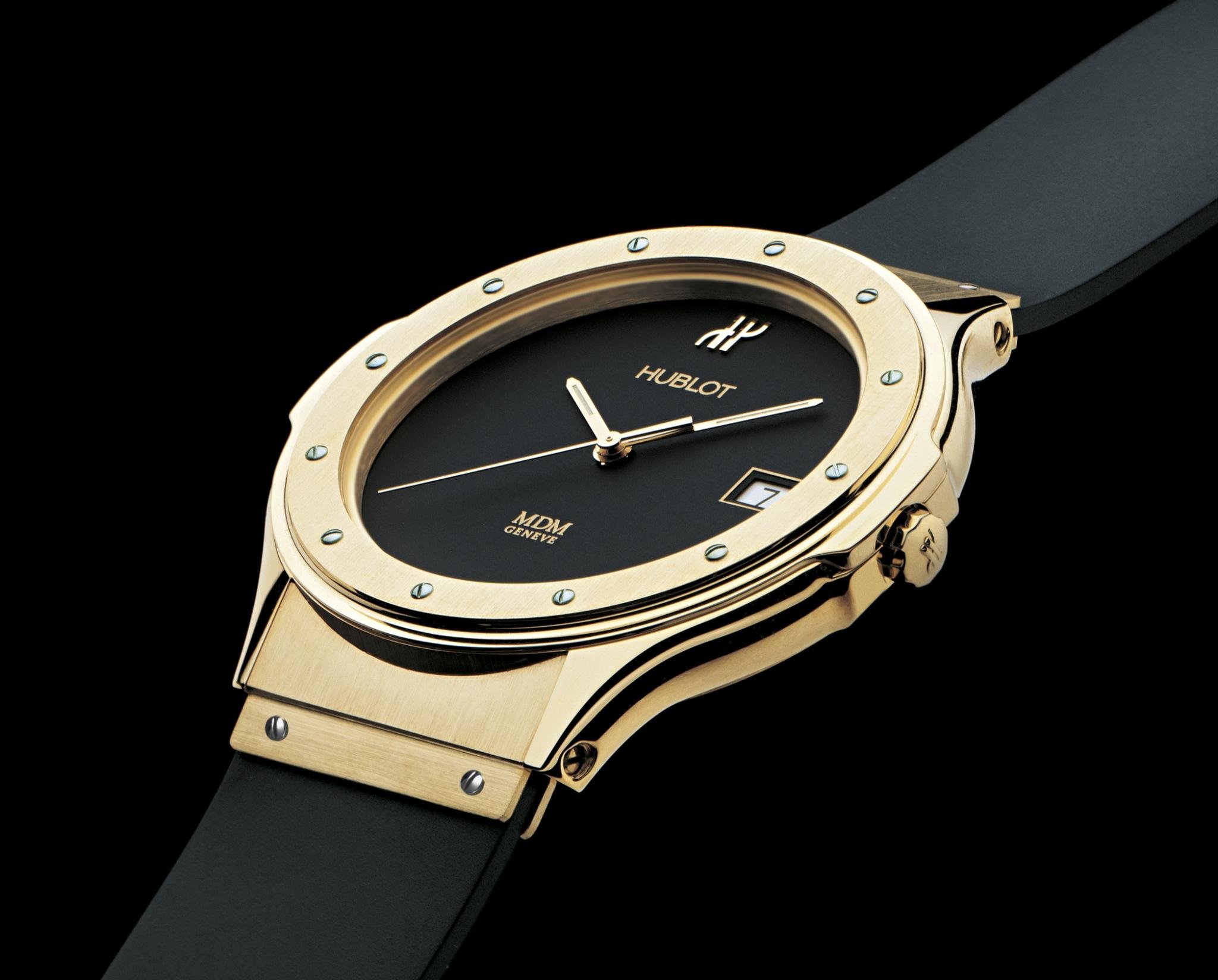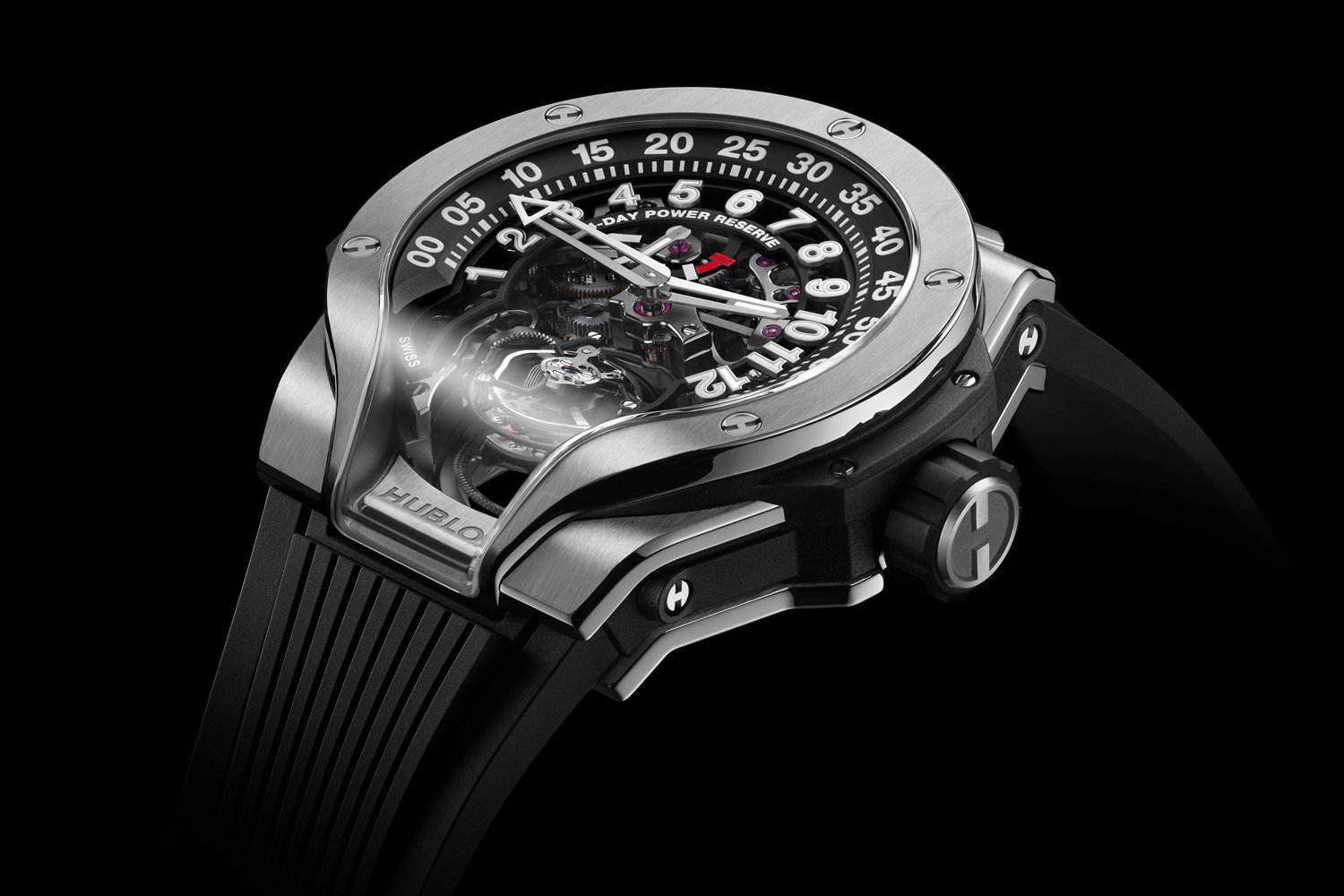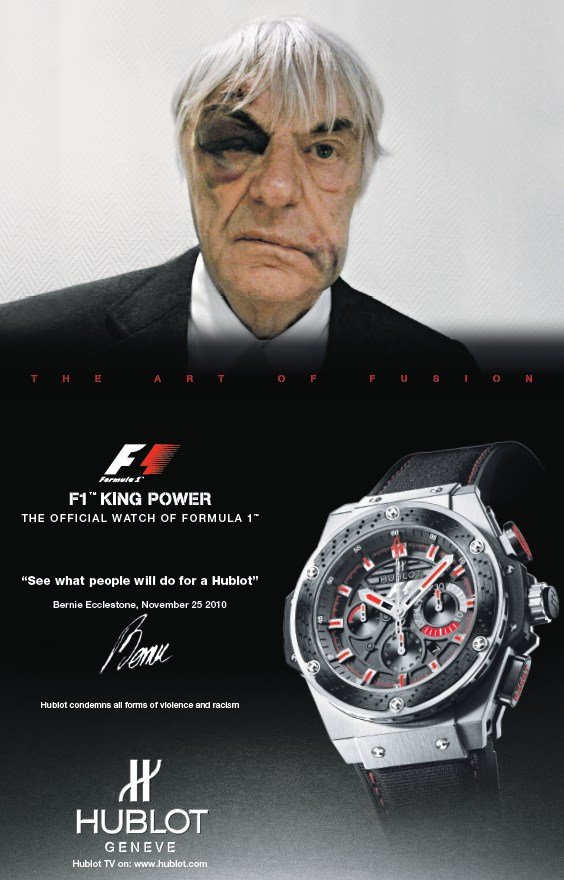Hublot May Finally Be Getting the Respect It Deserves
Main image source: ABlogToWatch
Note: I originally wrote this as an “Audicle” for The Real Time Show, and my colleagues and I had a very in-depth follow-up discussion. If you have some time, please do check these episodes out, as well as the show’s growing catalog!
Disclaimer: Any links provided are for additional context or information only. Unless otherwise noted, I receive no compensation for providing these links, and linking to each respective destination does not imply endorsement.
It’s hard to feel bad for Hublot and its CEO Ricardo Guadalupe:
As part of LVMH’s Watches & Jewelry group, Hublot contributed to the group’s roughly 10.5 billion euros in revenue over 2022, an 18% reported increase over 2021.
In bigger-picture terms, the brand has been around since 1980, no small feat for any company, let alone one launching into a space occupied by incumbents over a century old.
On top of that, Hublot’s large marketing budget means that it is a well-known brand in the watch industry, and if you happen to be a Hublot employee, you get to work in the organization’s modern facilities in Nyon, Switzerland.
Then again…
I struggle to think of any luxury watch brand that is dismissed as quickly and as harshly by collectors as Hublot.
A common theme in my writing is a frustration at “zombie opinions”, views that are widely shared, stated almost reflexively, without much thought, and that keep stumbling along despite tangible evidence to the contrary.
Here is only one example of this view.
The view that Hublot produces nothing but horological trash, undeserving of any respect, is one such opinion. It needs to go from “undead” to fully dead, and there is plenty to work with to make that case.
Let’s start with the primary complaint against Hublot, which is that its design DNA is derivative.
“Hublot” means “porthole” in French, and along with the bolts on the bezel meant to evoke this part of a boat, when you hear the word it’s hard to prevent your mind from immediately going to other, famous nautical-themed watches launched around the same time; I’m thinking of course of the Audemars Piguet Royal Oak and the Patek Philippe Nautilus.
I’d be foolish to say that I don’t see that influence, but is it right to call the brand’s original watch, the Classic Original a blatant copy? I don’t think so, because to do so robs Hublot, and at the time the brand’s founder Carlo Crocco, of some quite revolutionary work.
The first Hublot watch combined a natural rubber strap which apparently not only took 3 years to develop but also happened to be the first rubber strap in the history of watchmaking. That rubber strap was then paired not with a plastic case, as one could fairly have expected at the time, but rather a yellow gold one!
You may find this completely banal in 2023, but at the time it must have been shocking, perhaps even provocative, like the reaction Audemars Piguet received with its Royal Oak when it priced a steel watch like one made of precious metals.
I’m saying that if you acknowledge the historical significance of the latter, you have to do the same for the former, and when you compare a rubber-strapped Royal Oak Offshore to a Hublot Big Bang, yes, they do look similar, but ask yourself: whom inspired whom here?
Beyond its historical significance, that initial use of the rubber strap is also key to deflecting the accusation of design plagiarism, because the Hublot Classic Fusion really is its own thing. It’s an “integrated bracelet” watch in the sense that the case and bracelet are meant to be seen as “one”, but it employs an integrated rubber strap, not a metal bracelet. If you think I’m reaching a bit, how many watches out there look rather a lot more like the Royal Oak and Nautilus - with steel bracelets - yet aren’t straight-up rejected by the watch community simply for existing?
While the late Virgil Abloh may have been credited with vocalizing the “3% approach” to design, the watch industry was putting it into action decades before. Brands riff on each other, sure, but design similarities from one watch to another shouldn’t prevent us from appreciating what newer models bring to the table, and as far as I’m concerned, Hublot made its own mark from the beginning.
The next major critique people have about the brand is that it extends its design laziness to its technical specs, choosing to employ very standard movements in watches that cost far more than could reasonably be justified.
I will absolutely admit that I was disappointed to see very standard Sellita movements in the recently announced Classic Fusion Original. The movement is fine, but its totally undecorated appearance does make me scratch my head because Hublot is a luxury watch company, the front of the Classic Fusion does convey luxury, but turn it over…and the fun is spoiled a little.
That aside, Hublot’s hardly the only watch company - or company period - to try to stretch its margins and in the process, have a few misses in its catalog.
If you look past the brand’s entry-level models, there’s plenty to be impressed with, even wowed by. A few years ago I came very, very close to buying either a Big Bang Unico chronograph or a Meca-10, and if you haven’t heard of these I definitely encourage you to run a quick search for them.
It’s probably fair to say that we all get led down the watch rabbit hole thanks at least partly to a fascination with their internals, and on top of that, I studied and worked as a mechanical engineer. Think what you will about the watches themselves, but I had, and still have, an almost visceral reaction to how cool-looking those movements are.
At an even higher-level, the Hublot MP-05 LaFerrari is wild in pictures and must be bonkers on the wrist. Even if I had the cash it’s not to my tastes but personally, if I was on team “Hublot Sucks”, the first time seeing that watch would be enough to convince me that Hublot is a bonafide manufacture.
It’s not just the movements that are cool, the materials in which they are wrapped are seriously impressive as well.
In fact, it says a lot about Hublot that its uses of titanium and ceramic are almost boring compared to the other materials it employs. I would go so far as to say that in my opinion Hublot is the premier materials science shop in the watch business.
While the company was not the first to use sapphire cases, it’s probably the brand currently most associated with that material. And, though the novelty of a clear case may now be somewhat diminished, can we please take a step back and think of how difficult this must be to do properly, especially in the brand’s case geometries?
This is very, very high-level stuff already, but the brand pushed things even further at the most recent LVMH watch week with a form of sapphire that, apart from being materially different from the sapphire typically used in watch cases, almost requires a radiation suit to wear, given its nuclear-yellow color.
We should take a step back again and recognize that to do ceramic or sapphire well - period - is noteworthy, but this is hardly the first time Hublot has gone beyond standard black ceramic or clear sapphire, and doing this requires technical chops that only a serious manufacture can possess.
As impressive as they are technically, perhaps it’s those same colors that have gotten Hublot its bad rap; after all, when people see a bright yellow watch, I don’t blame them for being turned off by the “in your face” aspect of it well before thinking of what a technical feat it represents.
I understand that reaction, but to then use that initial impression to support the statement that “Hublot sucks” misses the entire point of the company’s mission:
Hublot is indeed “in your face” and proud of it
I can’t talk about Hublot without talking about the marketing, which has not only raised the brand’s profile but also the ire of many purists in the watch community.
Starting in 2004, Hublot was run by legendary watch industry pitchman Jean-Claude Biver, and from the get-go his imprint was obvious. He debuted the “Big Bang” which is still in the lineup today, and in 2010, that brash spirit carried on in the form of a rather graphic ad campaign featuring F1’s Bernie Ecclestone who had been assaulted for his Hublot.
You have to respect the brashness of Hublot’s marketing team here. Not only did they have this idea and run with it in the first place, but they were also like “oh yea, Bernie Ecclestone got violently mugged for his Hublot so now you see how desirable it is and should want to buy one too, but Hublot “condemns all forms of violence and racism” (Image source: www.ablogtowatch.com).
Bad taste? Great idea?
That’s up to you to decide, but you can’t argue that a) it makes an impression and b) Hublot has grown tremendously, so people - people with different tastes than me and perhaps you - are buying these watches.
I’ll add that the people purchasing from Hublot probably do not care - at all - what anyone thinks about them wearing a Hublot.
They just want to have a good time and put their extrovertedness on full display for the world, and to that I say: why not?
How is this type of “flexing” different from the flexing that’s accepted because it involves a Royal Oak Offshore?
Actually, there’s an irony there that only just dawned on me while writing this:
Despite, or maybe because of, how brash Hublot’s watches and marketing are, Hublot just might well be the most authentic brand in the industry.
Generally, high levels of marketing tend to be associated with commensurately low levels of authenticity. Hublot is one of the rare examples where this doesn’t apply because as the saying goes “it does exactly what it says on the tin”.
I forget where I first read this years ago, but understanding that you want designs to be polarizing has stuck with me since then. Sure, you may turn some people off, but is that worse than boring everyone?
Hublot could have softened its approach over time, making smaller, more discrete watches to suit current tastes and adapted the marketing accordingly. Instead the company went the other way, upping the ante technically and aesthetically every year, to the point where every Hublot now unmistakably looks like a Hublot.
Ok, I’ll grant you the “Spirit of Big Bang” line is a bit too on-the-nose, but that aside you have to respect Hublot for steadfastness. It had the fortitude to stick to their strategy, and year-after-year, it has put in some very hard technical work to turn that strategy into recognizable models. Times have changed while Hublot has stayed its course, and it seems that persistence may finally be paying off.
Now, to be clear, from a financial point-of-view Hublot has been doing well for years, and apparently has plans to expand its Nyon facilities. But, I’m sure the employees working there wouldn’t complain if some of the negativity slowed just a bit, and it seems there is hope.
The Rolex Rainbow Daytona is not only accepted now, but also coveted, and years of “flex-culture” have led fashion consumers generally to be much more welcoming when it comes to flashy designs.
The coverage I read from the latest LVMH Watch Week was overall very receptive of Hublot’s latest offerings, with Worn & Wound’s Zach Kazan even posting on Instagram:
“If you’re a watch enthusiast and still have a knee-jerk negative reaction to Hublot, you should probably stop being lame. The LVMH Watch Week releases were fantastic from top to bottom.”
Alon and Rob also spent a significant amount of time on The Real Time Show episode 23 making their own strong cases as to why Hublot deserves far more credibility than it is currently granted.
Going back to the Classic Fusion Original in particular, nowhere do I remember reading that the re-introduced models looked like copies of more popular watches. Rather, it seemed the watch press was content just to enjoy the watch for what it was.
In isolation none of this may seem like enough to move the needle, but taken in aggregate and repeated enough, over time, I do believe that in a few years there will be much more widespread enthusiasm over the brand’s releases.
I couldn’t be happier if this happens, because Hublot serves an important function within LVMH and the broader watch industry.
Within LVMH, hopefully there’s as much technical cross-pollination as possible between brands, with say, Zenith, benefitting from Hublot’s materials expertise, while Hublot can perhaps think about upgrading their entry-level models to something beyond a Sellita.
From an industry perspective, Hublot plays a vital role. So much of the context in which we, and brands themselves, place luxury watches has to do with wood-paneled offices, fancy lounges or serious adventures.
What about just having fun in fun places?
Isn’t that what all watches are supposed to be, at the most basic level: just really, really fun?
I’ll continue repeating that the watch hobby reaches its maximum level of fun when you open your mind to everything; the more choices that are out there, the better, and I for one would be sad if every model from every brand converged to 38 mm dress watches and 40 mm dive watches.
So, please, next time you’re near a Hublot boutique, swing by. No, you may not find anything you want to buy, but I think you’ll have a hell of a lot of fun.






